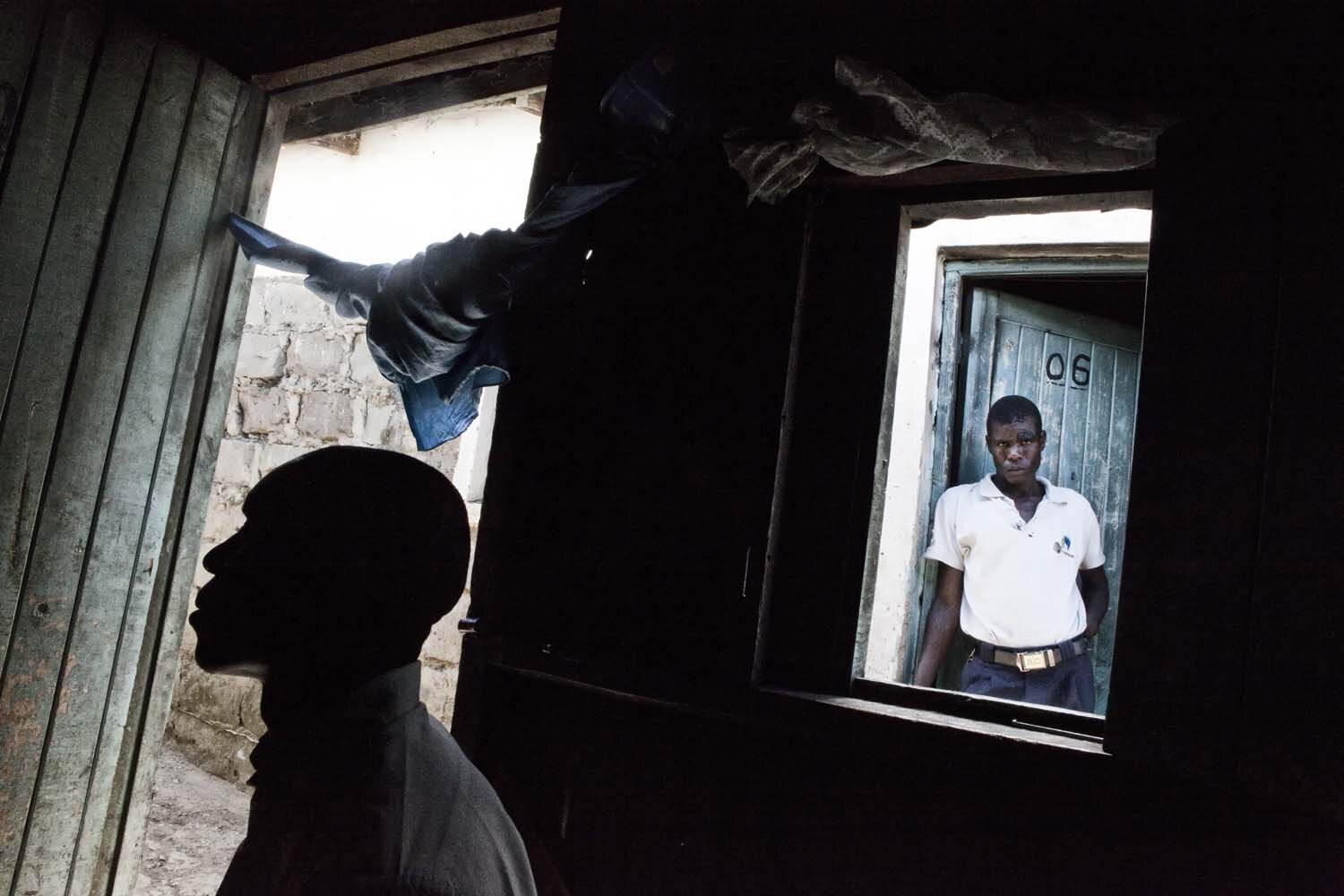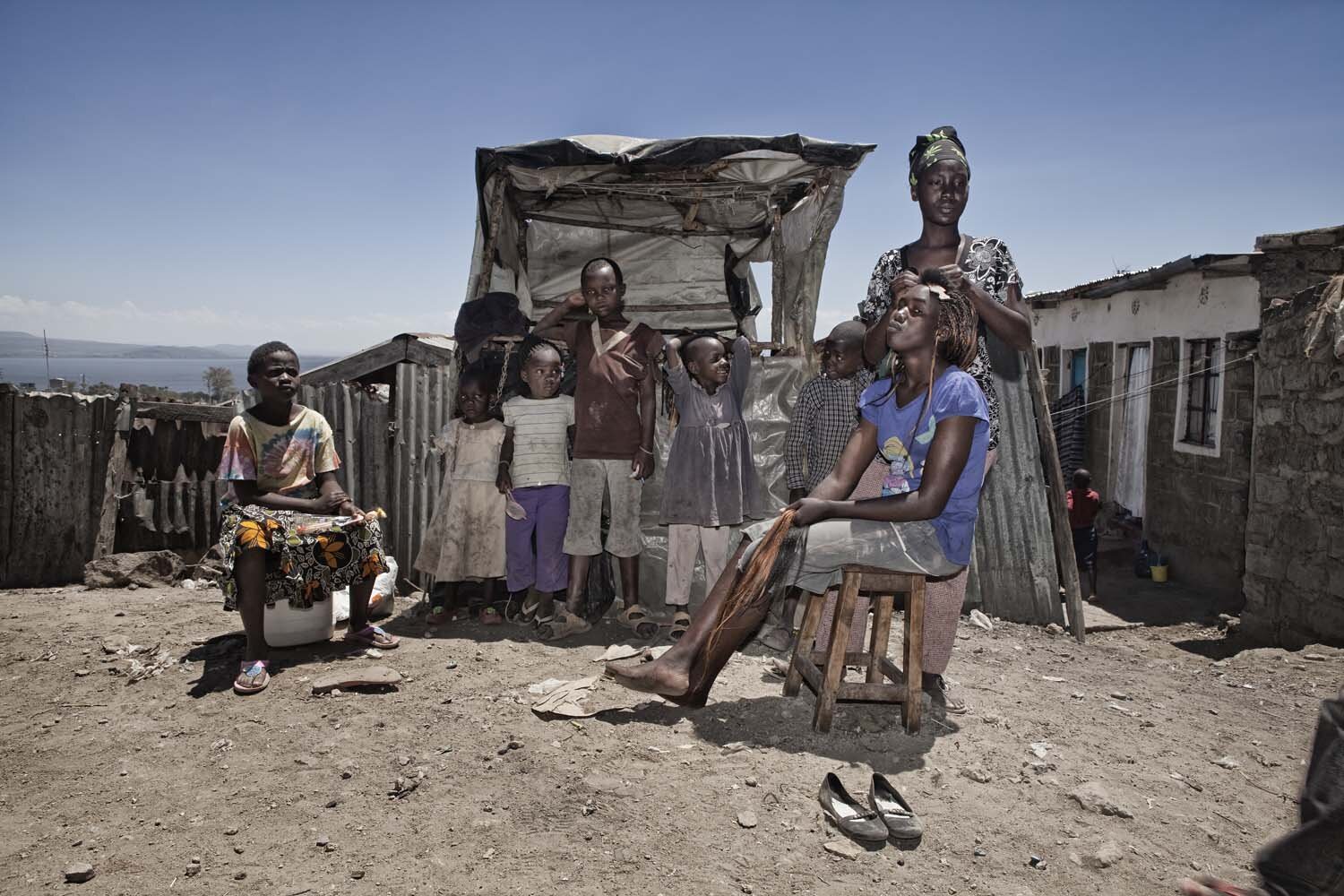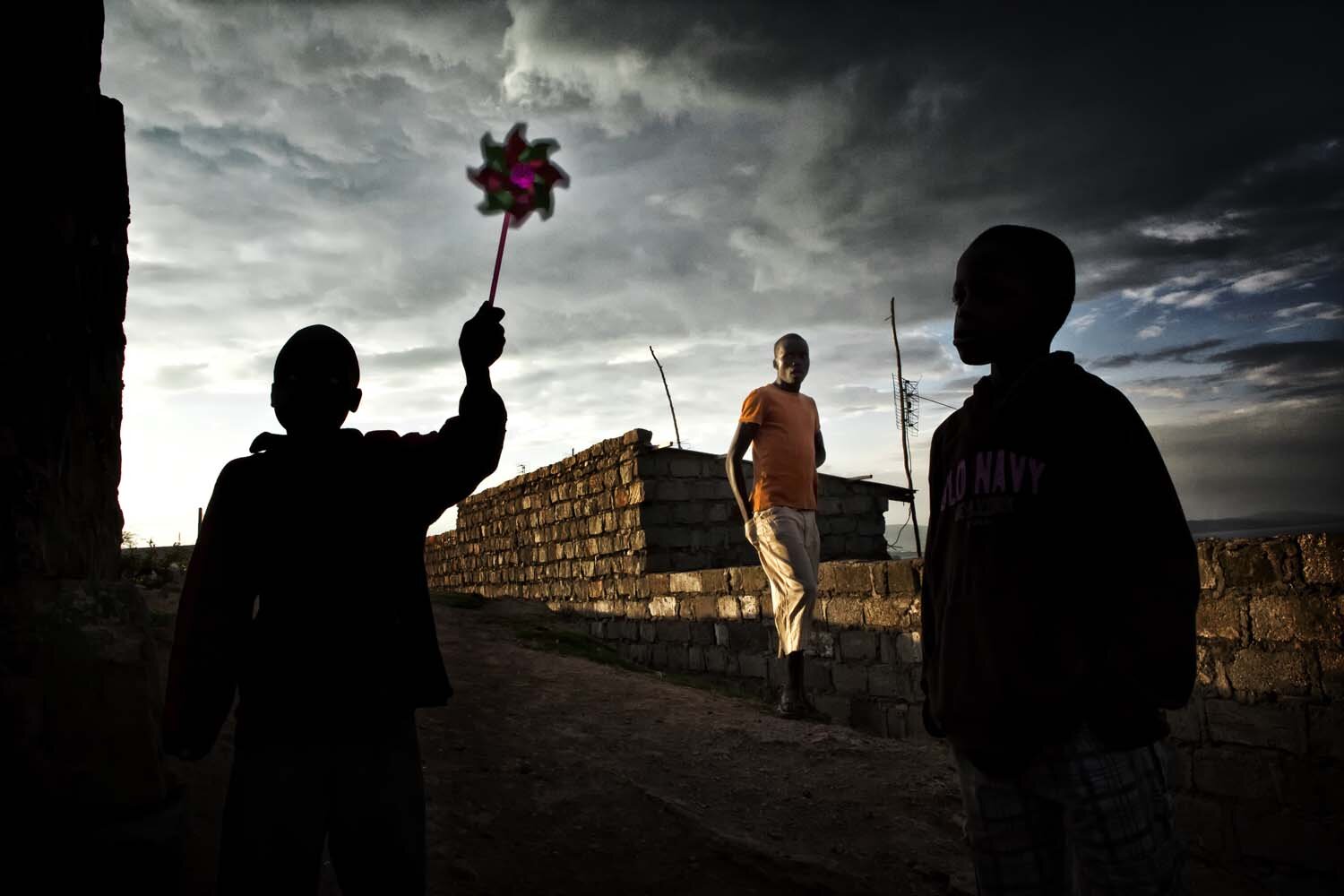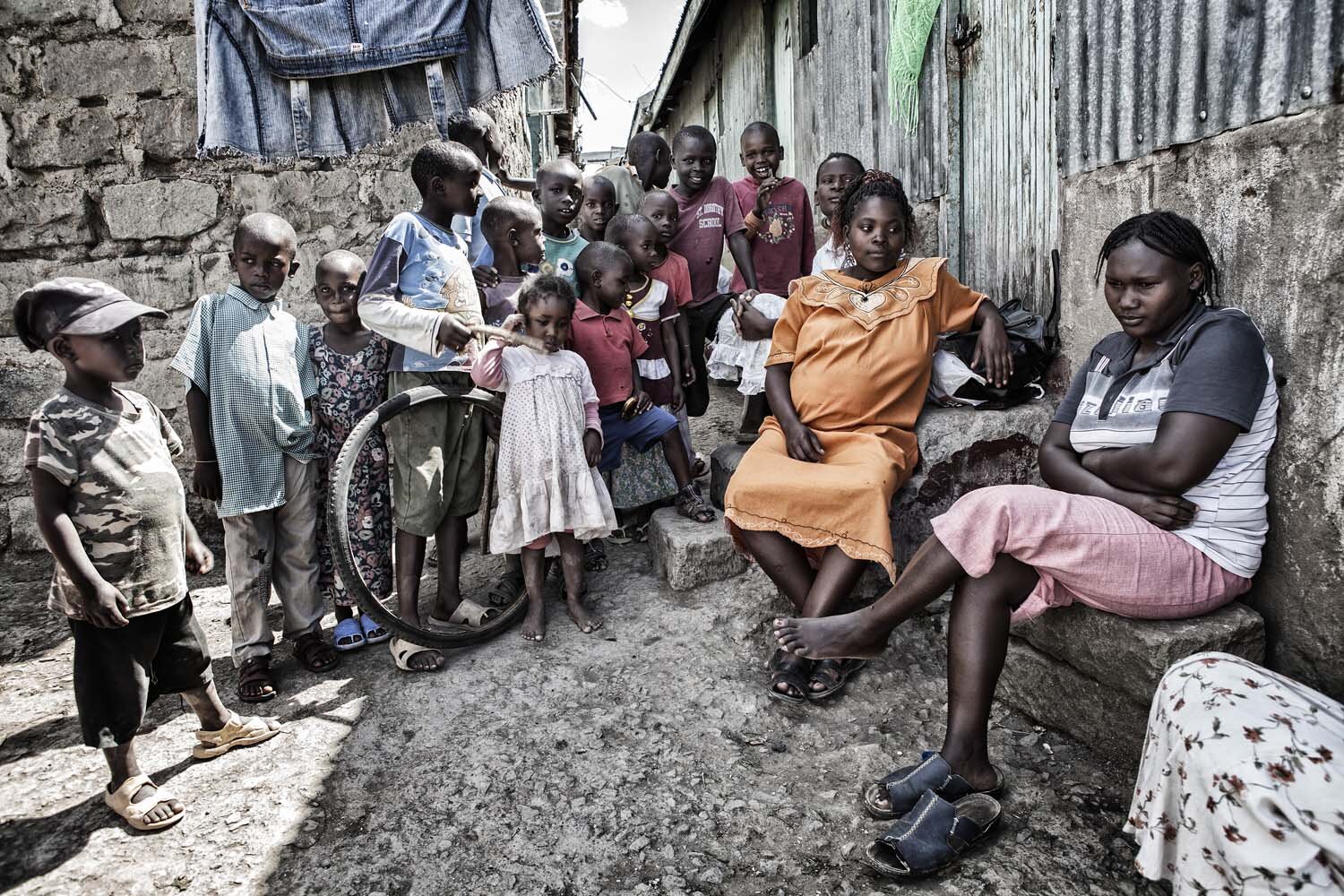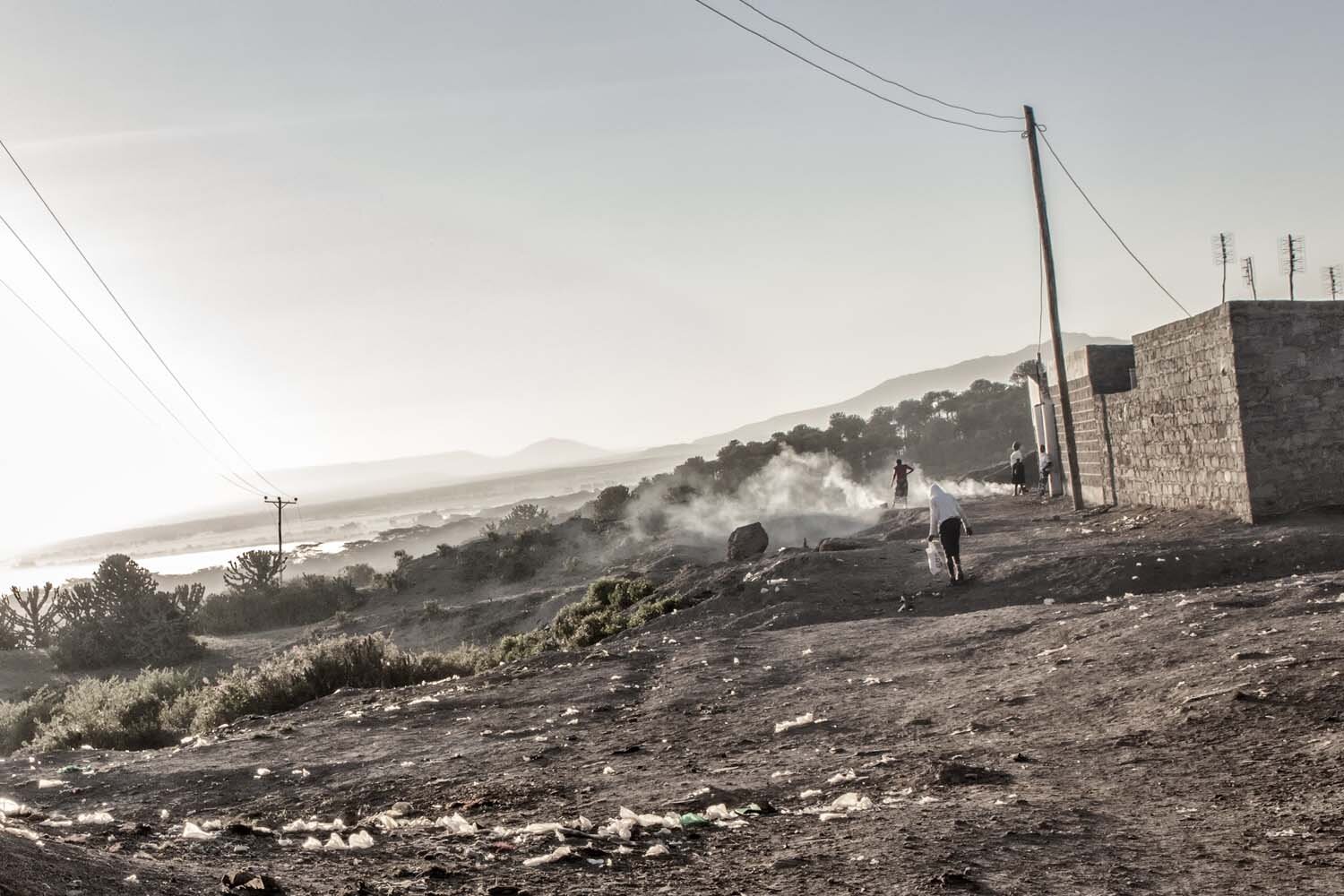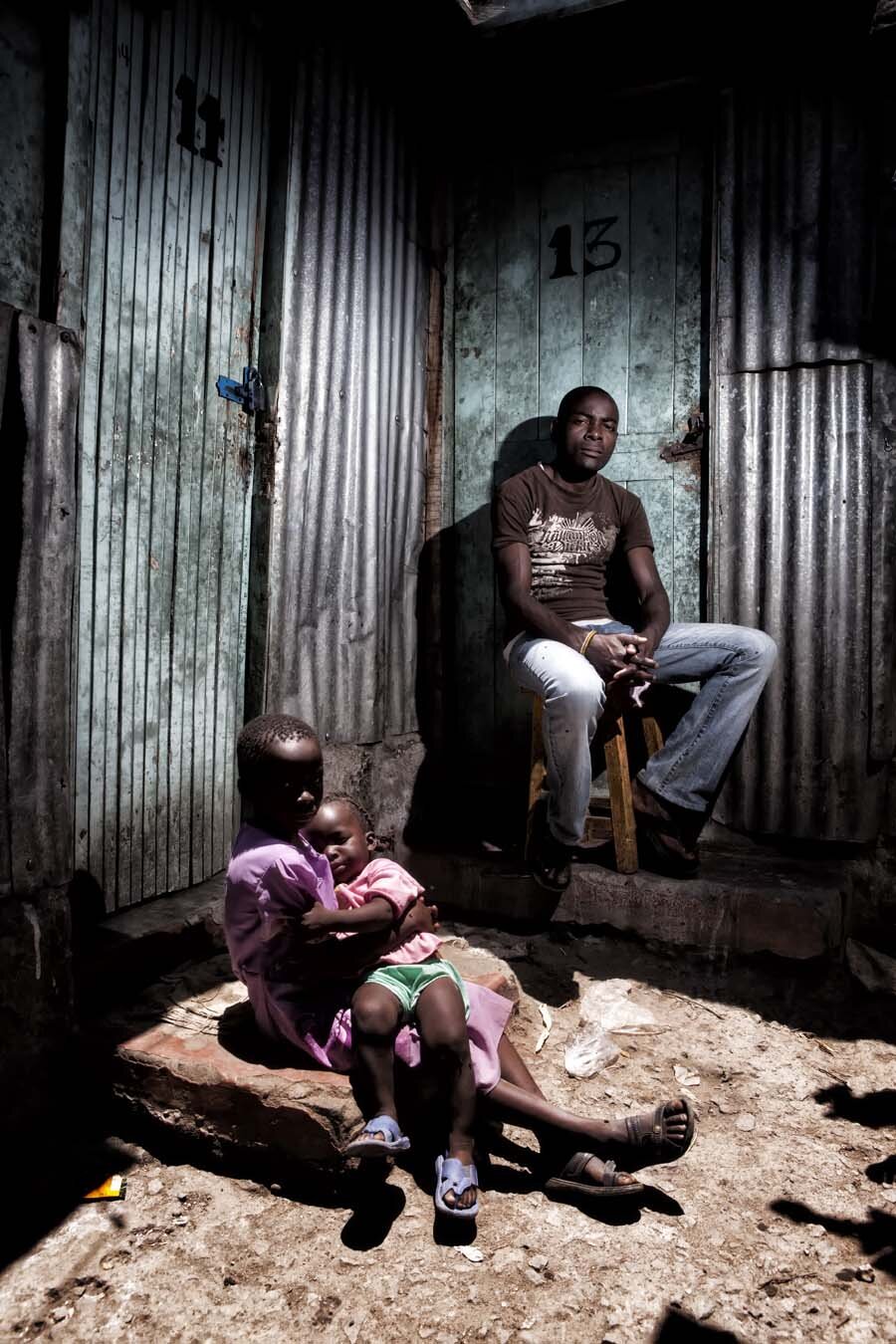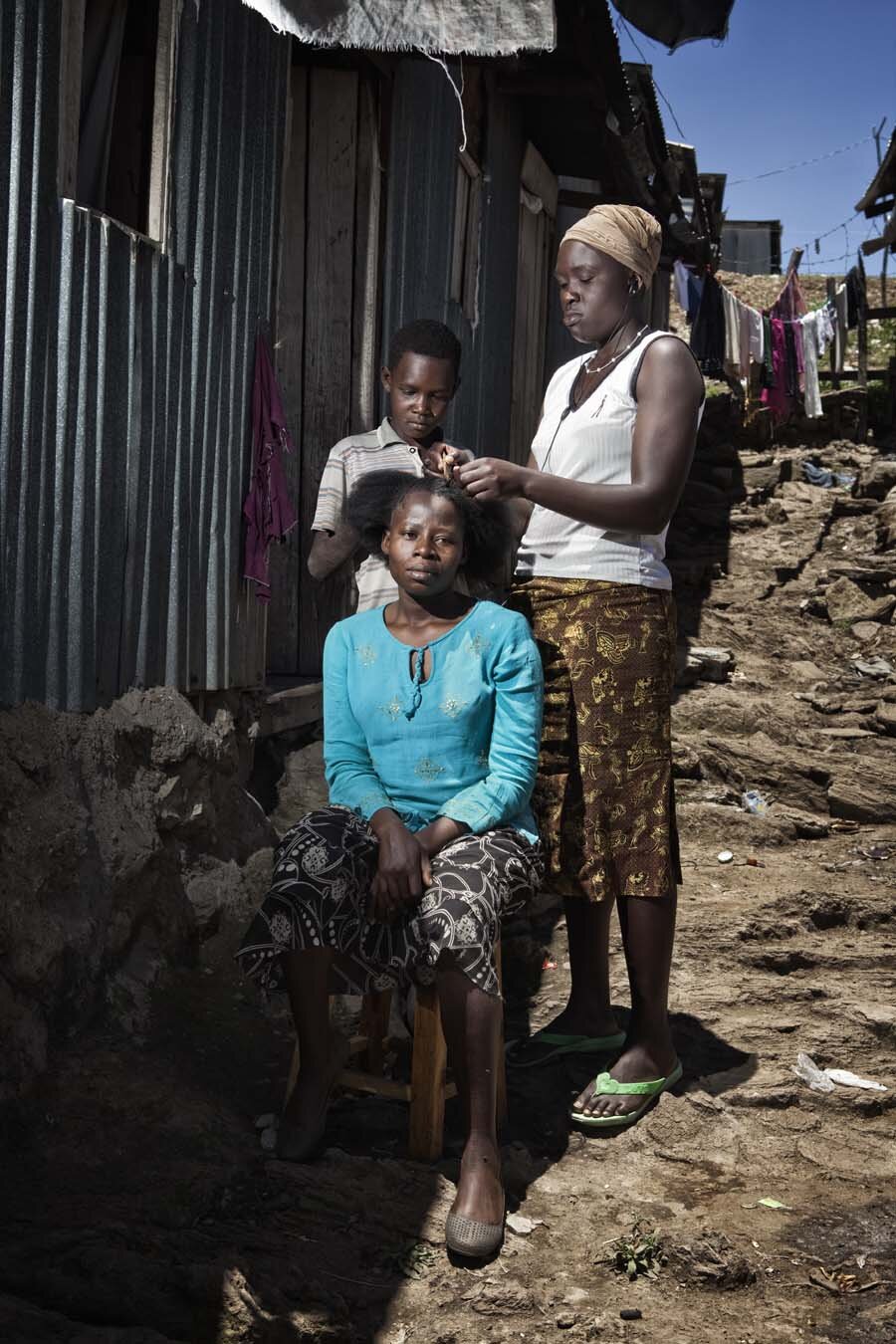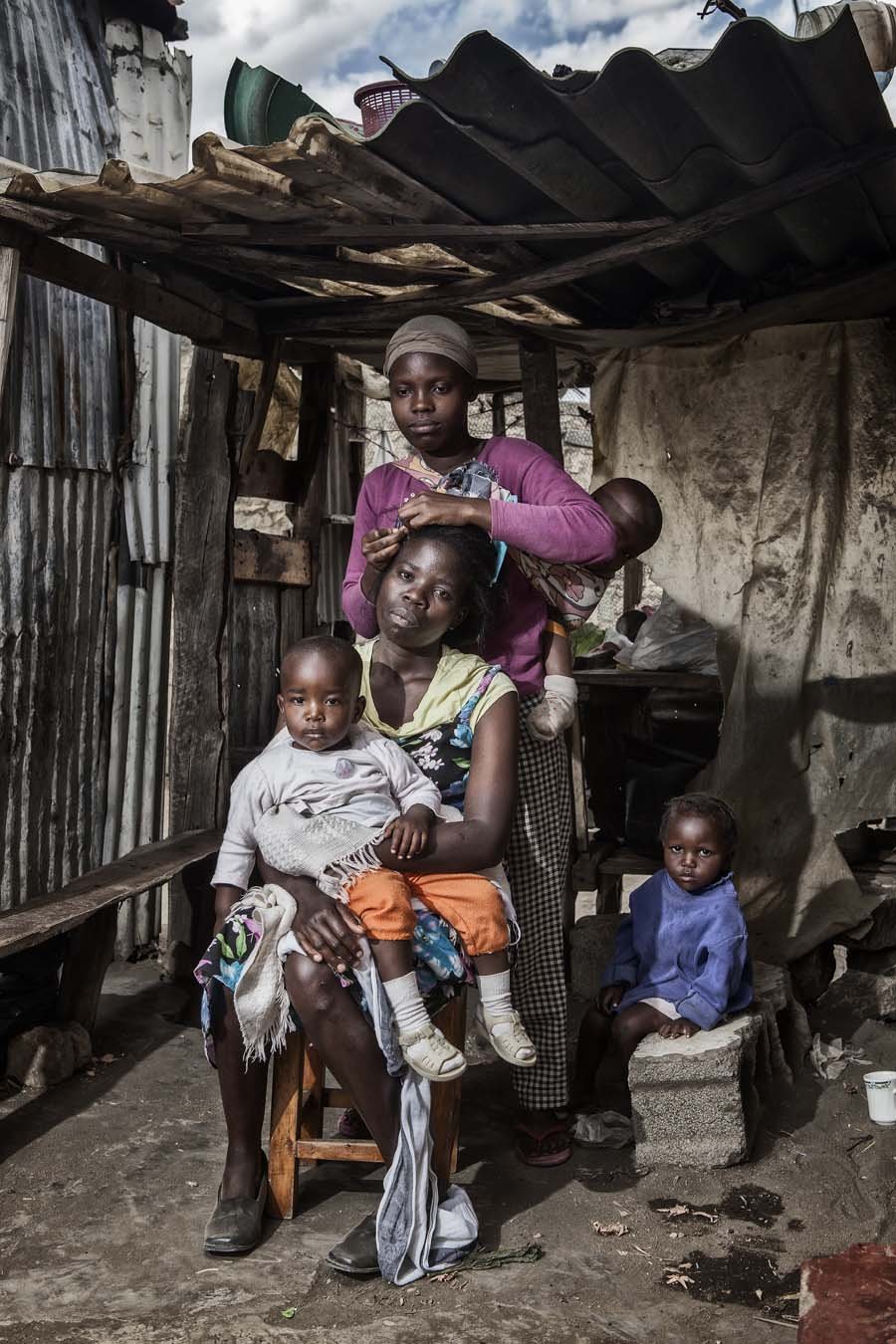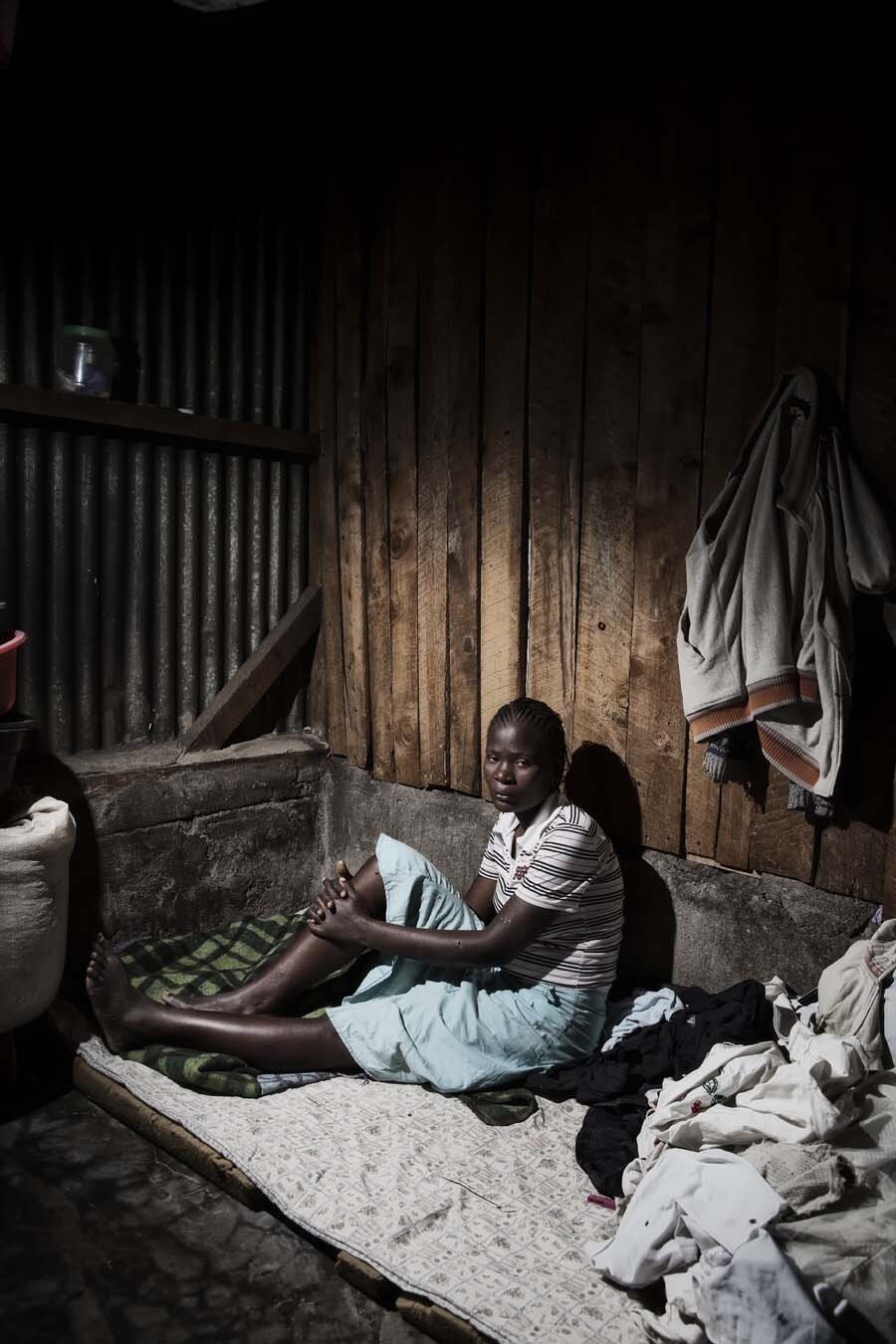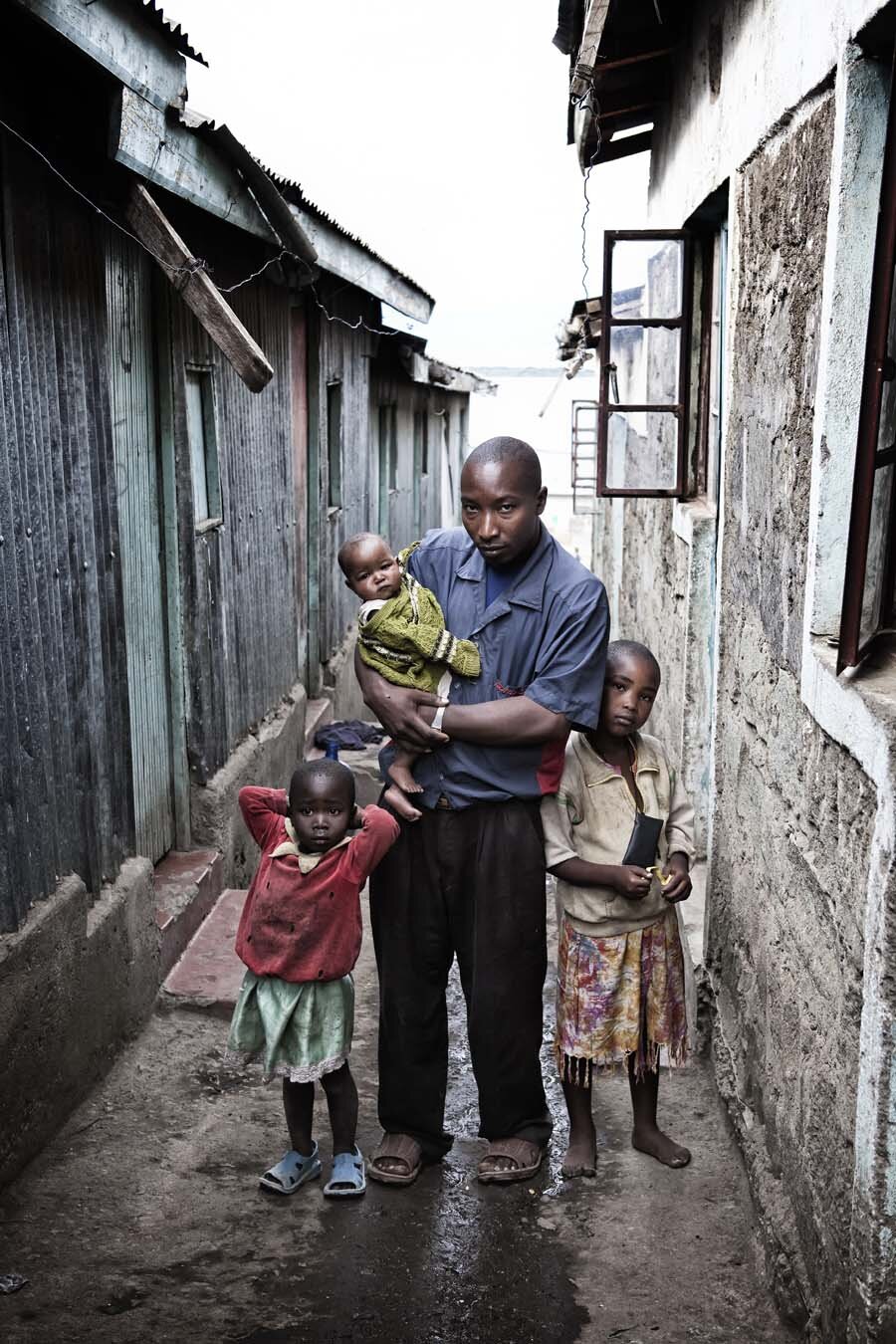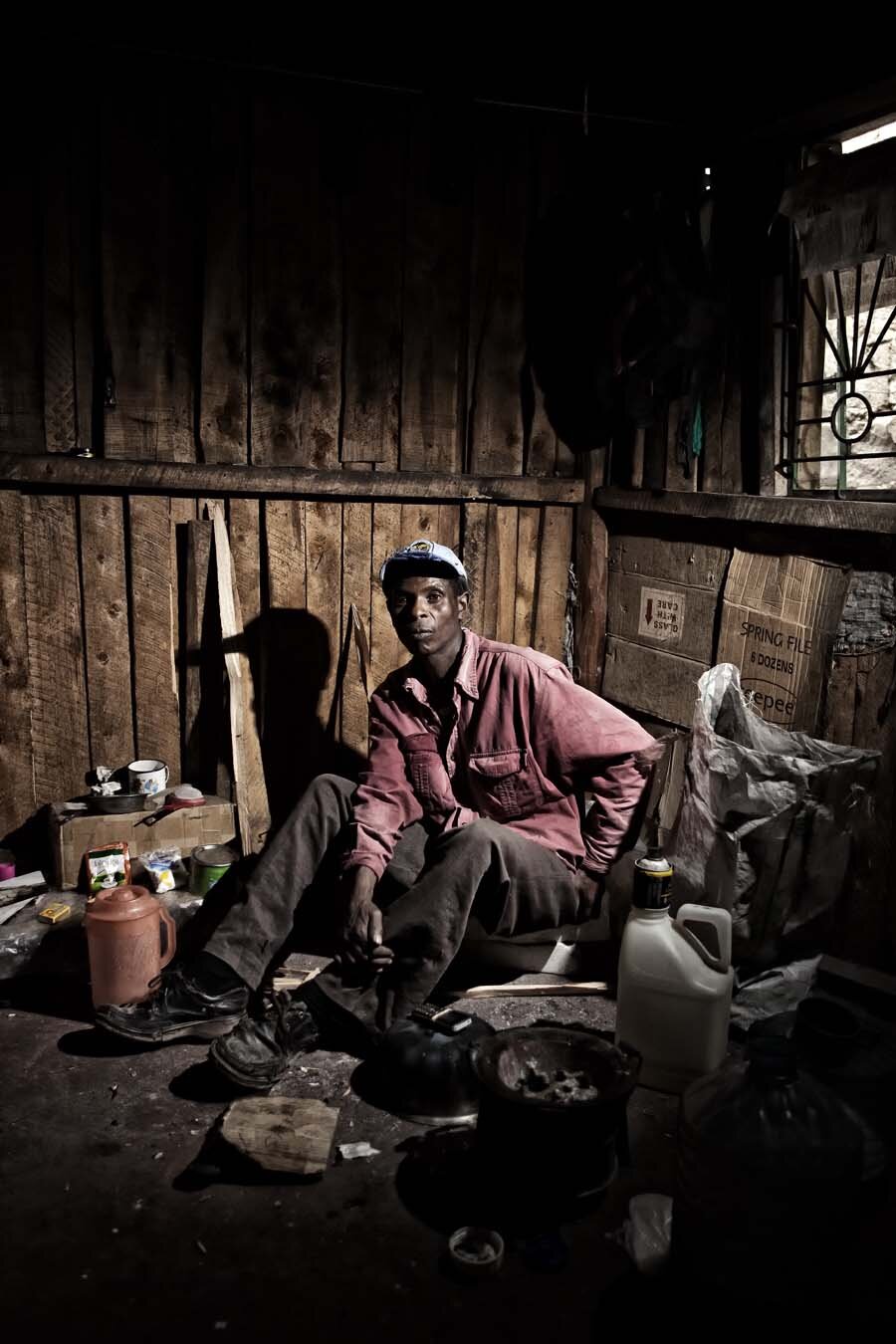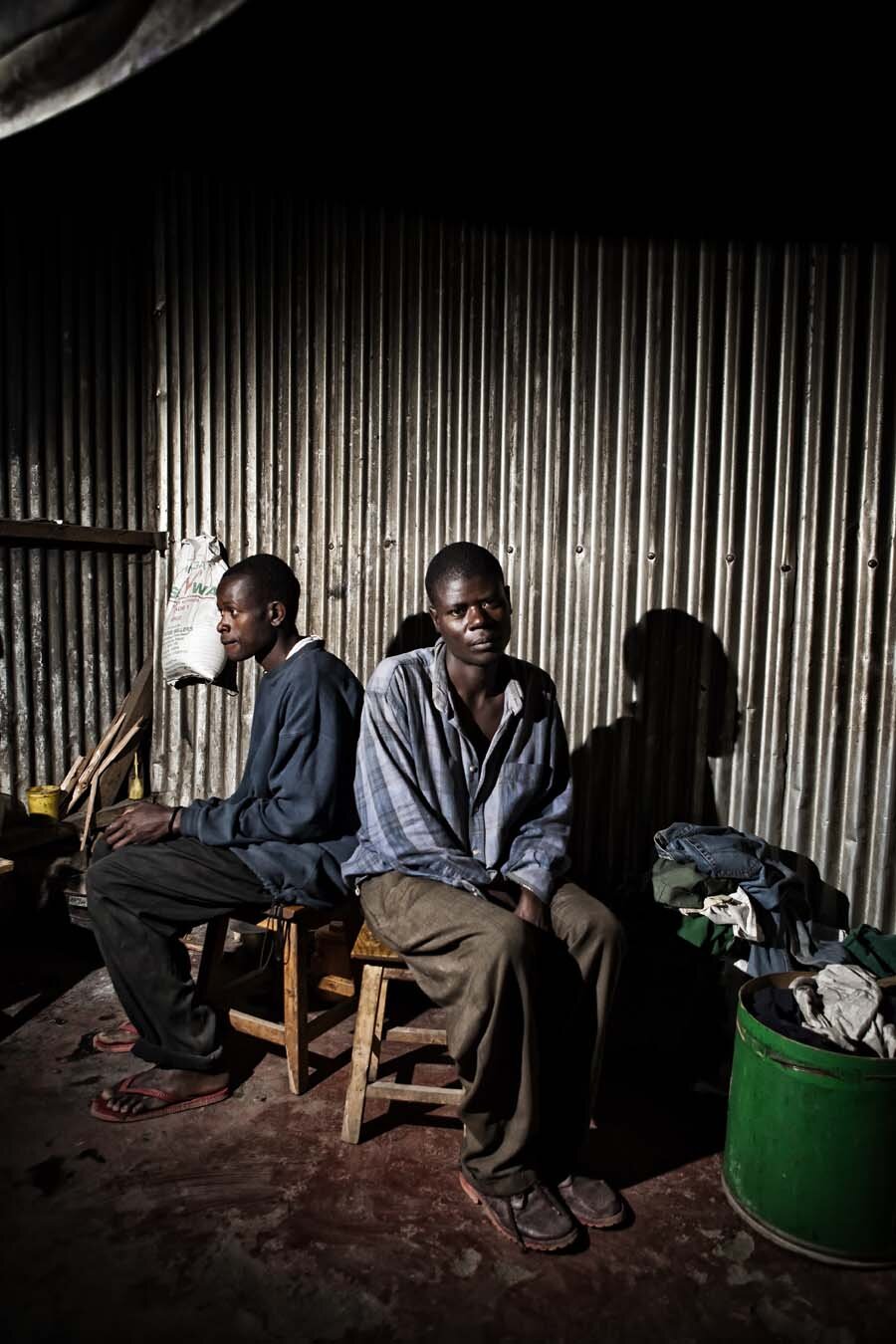Flower Farms
from the series: people in crisis, Kenya, Lake Naivasha, Kamere Slum 2012
Thirty years ago, hippos and Maasai cattle herders shared the shoreline of Lake Naivasha in the Rift Valley of Kenya with the small local community of farmers and fishermen. The human census in 1969 showed just 27,000 people living in the surrounding areas. Today, the population is nearly 300,000 and security guards with walkie-talkies patrol the few paths left open for local people and animals to get down to the lake. The most visible changes to the lake in the past 30 years, and the cause of much of its problems, are the giant sheds and greenhouses of more than 50 major flower farms that now line its shores, and the settlements of more than 250,000 people who have flooded into the area since the global flower industry moved in. Naivasha is now Europe‘s prime source of cut flowers. Living conditions in the villages and slums surrounding the lake are miserable. Low and irregular wage payments, sexual harassment and forced overtime are commonplace, affecting workers‘ ability to provide childcare or access health and education services. The exposure to harmful chemicals resulting in skin irritation, breathing problems and miscarriages. Employment is usually contracted on temporary or casual bases and union activity strongly discouraged. The result is job insecurity which leaves workers unaware of their basic rights, or otherwise they simply unable to demand them.
















